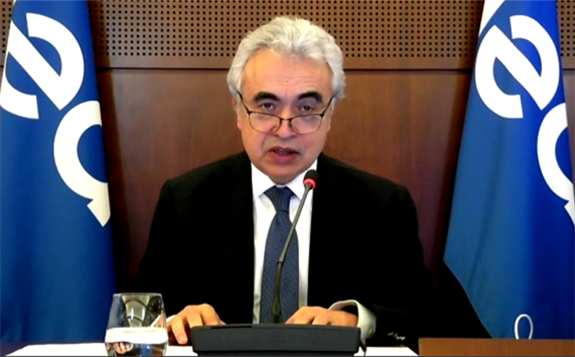
Speaking at a press conference for the launch of the IEA’s latest report into renewables, executive director Birol said that the global energy sector was “experiencing its worst year since the Second World War”.
He said the impact of coronavirus on the industry was seven-times worse than that of the global financial crash earlier this century.
Yet he stressed that renewable power was the one area bucking this trend. “Ninety per cent of global energy growth is coming from renewables,” he said, spotlighting a particular success story in India, which saw 15GW of wind and solar installed in the first half of this year – as much as was installed in all of 2019.
“Renewable power is defying the difficulties caused by the pandemic, showing robust growth while others fuels struggle,” said Birol.
“The resilience and positive prospects of the sector are clearly reflected by continued strong appetite from investors – and the future looks even brighter with new capacity additions on course to set fresh records this year and next.”
The IEA report states that China and the US will drive new additions of renewables this year to a record level of almost 200 GW.
This rise – representing almost 90% of the total expansion in overall power capacity globally – is led by wind, hydropower and solar PV. Wind and solar additions are set to jump by 30% in both the US and China as developers rush to take advantage of expiring incentives.
However, the report flags that “even stronger growth is to come”. India and the European Union will be the driving forces behind a record expansion of global renewable capacity additions of nearly 10% next year – the fastest growth since 2015 – according to the report.
This is the result of the commissioning of delayed projects where construction and supply chains were disrupted by the pandemic, and growth in markets where the pre-Covid project pipeline was robust.
India is expected to be the largest contributor to the renewables upswing in 2021, with the country’s annual additions doubling from 2020.
The IEA highlights that in the first 10 months of this year, China, India and the European Union have driven auctioned renewable power capacity worldwide 15% higher than in the same period last year – a new record that shows expectations of strong demand for renewables over the medium and long term.
At the same time, shares of publicly listed renewable equipment manufacturers and project developers have been outperforming most major stock market indices and the overall energy sector. By October, shares of solar companies worldwide had more than doubled in value from December 2019.
But the IEA cautions that policymakers still need to take steps to support the strong momentum behind renewables.
In the report’s main forecast, the expiry of incentives in key markets and the resulting uncertainties lead to a small decline in renewables capacity additions in 2022.
But if countries address these policy uncertainties in time, the report estimates that global solar PV and wind additions could each increase by a further 25% in 2022.
Critical factors influencing the pace of deployment will be policy decisions in key markets like China, and effective support for rooftop solar PV, which has been impacted by the crisis as households and businesses reprioritised investments.
“Renewables are resilient to the Covid crisis but not to policy uncertainties,” said Birol. “Governments can tackle these issues to help bring about a sustainable recovery and accelerate clean energy transitions.
“In the United States, for instance, if the proposed clean electricity policies of the next US administration are implemented, they could lead to a much more rapid deployment of solar PV and wind, contributing to a faster decarbonisation of the power sector.”
Birol also used the press conference to send what he called a “heads-up message” on biofuels, and the “missed opportunity” he witnessed in the aviation sector.
He said that of around 30 airlines given pandemic-related financial bailouts by their governments, only four received the money on the condition that they embraced energy efficiency measures to combat climate change.
The report’s outlook for the next five years sees cost reductions and sustained policy support continuing to drive strong growth in renewable power technologies.
Total wind and solar PV capacity is on course to surpass natural gas in 2023 and coal in 2024. Driven by rapid cost declines, annual offshore wind additions are set to surge, accounting for one-fifth of the total wind market in 2025.
The growing capacity will take the amount of renewable electricity produced globally to new heights.
“In 2025, renewables are set to become the largest source of electricity generation worldwide, ending coal’s five decades as the top power provider,” said Dr Birol.
“By that time, renewables are expected to supply one-third of the world’s electricity – and their total capacity will be twice the size of the entire power capacity of China today.”